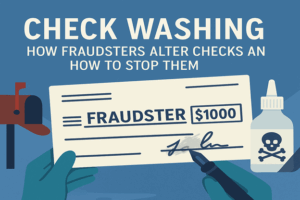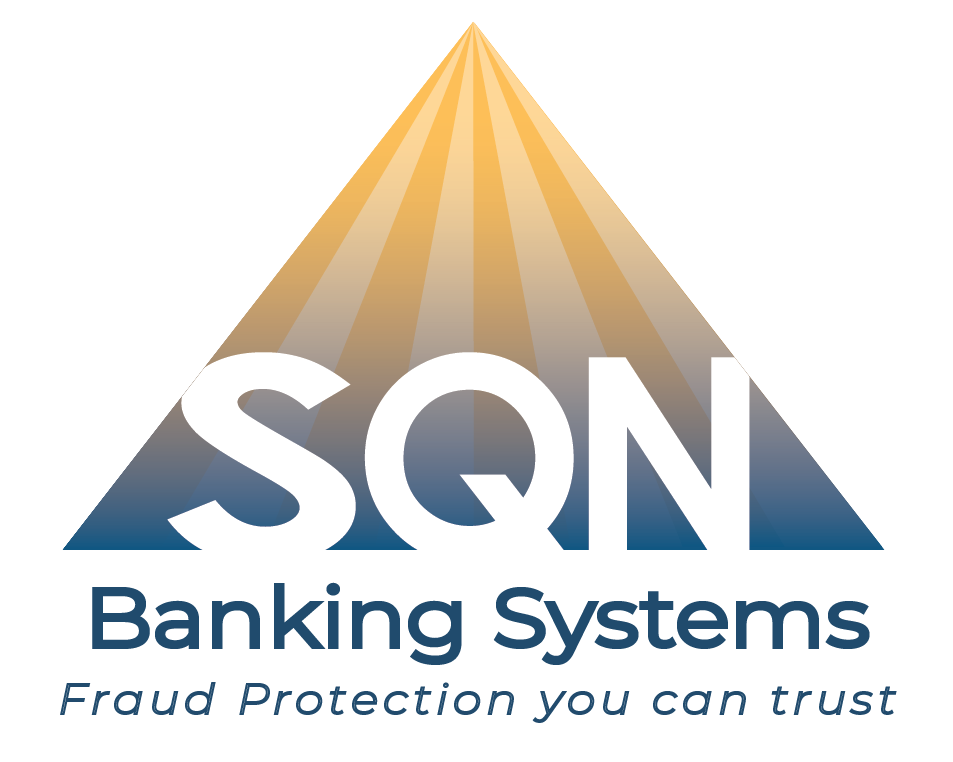Check Washing: How Fraudsters Alter Checks and How to Stop Them

Check washing is a serious type of fraud where criminals steal a check, erase the original details and rewrite it to cash in more for themselves. This is on the rise, affecting both individuals and businesses that still use paper checks for payments. According to the U.S. Postal Inspection Service (USPIS), “check washing” costs Americans over $1 billion a year, that’s how big a problem this is.
Fraudsters target mailboxes, hoping to intercept checks sent for bills or personal payments. The good news is that with awareness and smart precautions you can protect yourself and your finances. This article will explain how fraudsters alter checks, effective check washing prevention strategies and what to do if you become a victim of this common financial crime.
What is Check Washing and Why It’s a Growing Threat
Check washing is a type of check fraud where criminals chemically erase the ink on a legitimate check to change the payee’s name and amount. This allows fraudsters to deposit stolen checks into their own accounts after altering the original info while keeping the original signature.
How does check washing work?
Check washing involves a simple yet effective process. After getting a check through mail theft or other means, criminals use common household chemicals like acetone (nail polish remover), bleach or specialized solvents to dissolve the ink.
These chemicals target the dye-based inks used in most ballpoint pens while leaving the check paper intact. Once the original info is erased, fraudsters write in new payee details and often increase the amount. The original signature remains untouched, making the altered check look legitimate to banking systems.
Why checks are still targeted
Although digital payment methods are growing in popularity, checks are still targeted for several reasons. First, checks have all the information a criminal needs in one document, account numbers, routing numbers, signatures and personal details. Second, many businesses and government agencies still use checks for payments, providing a steady supply for theft. And third, check fraud gives criminals a direct path to cash, unlike credit card theft which often triggers immediate fraud alerts.
Read Also: Bankers Guide to Check Washing Threats and Tactics
How Fraudsters Alter Checks
Fraudsters use several methods to steal and alter checks. Check washing schemes cost Americans hundreds of millions of dollars every year. The U.S. Secret Service says check fraud is one of the top ways criminals attack the financial system.
1) Mail theft and mailbox targeting
Criminals get checks by stealing mail. They look for checks in blue USPS drop boxes, unsecured home mailboxes, apartment mail panels and cluster mailboxes. Mail theft usually happens late at night or early in the morning. The postal service gets many reports of stolen or tampered mail every year. Sometimes employees at sorting facilities take mail, but most thefts are done by people outside the post office.
2) Chemical ink removal techniques
After thieves steal a check, they often remove the writing with chemicals. Common chemicals used are acetone (nail polish remover), bleach, benzene, carbon tetrachloride, and correction fluid. Criminals usually tape the signature, then soak or rub the check so the ink comes off. They hang the check to dry and are left with a signed blank check they can rewrite. The FBI says criminals sometimes trace the signature with a pencil before washing it, because pencil marks don’t wash away.
3) Scanners and printers to create fake checks
Some criminals copy or remake checks using scanners, printers and blank check paper. They can edit a scanned check on a computer and print a very realistic fake. Washed checks can also be scanned and sold to other criminals on the dark web.
4) Common check-washing scenarios
A typical fraud scheme looks like this: thieves steal checks from mail, wash or alter them, then deposit or cash the changed checks. A $50 check can be turned into thousands of dollars this way. Criminal groups sometimes hire “walkers” to cash checks in person using fake IDs. One stolen check can be copied many times to make multiple bad checks.
Check Washing Prevention: Best Practices for Individuals and Businesses
To protect yourself from check washing you need a multi-layered approach that combines traditional methods with modern technology. Here are some of the best ways to stay safe.
1) Gel pens and secure check stock
The type of pen used to sign checks can make a big difference in preventing fraud. Gel pens, especially black ink, bond with the paper and are hard to remove. The Uniball Signo 207 pen is a good option because it resists the common chemicals used by criminals. Secure check stock also makes checks safer. These special checks are designed so the ink fuses with the paper, hidden patterns appear if someone tries to copy them, and the paper reacts to chemicals by leaving stains if tampered with.
2) Switch to electronic payments
Whenever possible, encourage customers to use ACH transfers, digital payments or bill pay. Digital payments are much harder to manipulate because they use encryption and security checks that physical checks can’t match. Today over 80% of Americans use digital payment methods and most people think they are safer than writing checks.
3) Positive Pay and Payee Name Verification
Financial institutions and businesses can also use Positive Pay services to catch fraud before it happens. This system compares each check presented for payment against the account holder’s official list of issued checks. If the details don’t match, the check is flagged. Starting in November 2024 the Treasury Department will implement stronger payee name verification, making this process even more secure.
4) Secure mailing and receiving practices
Mail theft is the primary entry point for check washing fraud. Instead of using residential mailboxes, mail checks directly at post office locations or hand them to carriers personally. For receiving checks consider certified mail with signature confirmation or tracking services.
5) Limit access to check-writing tools
Businesses should have strict controls over who can access check-writing capabilities. This includes requiring secure password processes, separating check preparation and signing duties and performing regular inventory of check stock.
Detecting and Responding to Check Fraud
Early detection is key to minimizing losses from check washing fraud. Identifying suspicious activity quickly can make the difference between recovery and permanent loss.
Monitor bank statements regularly
Review your account activity every few days to catch unauthorized transactions quickly. Look at the check images carefully, verify the payee names and amounts match what you wrote. Check the endorsements on the back of the checks, unusual endorsements often indicate tampering. Look for altered or illegible writing, scratched out text and cramped spacing, all signs of check washing.
Set up alerts for suspicious activity
Using mobile and online banking alerts adds another layer of protection. Real-time notifications for check clearings, large withdrawals or unusual account activity give both customers and banks the ability to respond immediately. Many financial institutions use fraud detection tools like FraudSuite to automatically review risky transactions without interrupting normal account activity.
What to do if you suspect check fraud
If fraud is detected, act fast:
- Stop payment on the affected check.
- Close the compromised account and open a new one.
- Collect and document all fraudulent items.
- File with the bank, law enforcement, the U.S. Postal Inspection Service and the FTC.
Institutions must guide customers through these steps so victims feel supported and contained financial and reputational damage.
Read Also: Feed AML, Fraud, and Cross-Selling Systems with Check data
Conclusion
Check washing is more than an old fashioned crime. It’s a growing, sophisticated threat that exploits vulnerabilities in the payment system. For community banks and credit unions the implications are big: rising fraud losses, reputational risk and increased customer vulnerability. Preventing check washing requires a multi-layered approach: customer education, secure check stock, Positive Pay, enhanced fraud detection and strong internal controls. And when fraud does occur, rapid detection and coordinated response is key to minimizing damage.
At SQN Banking Systems we understand the challenges smaller institutions face in fighting fraud. Our SENTRY: FraudSuite platform helps banks and credit unions detect and prevent check fraud in real time, reducing losses and increasing customer trust. Check washing may be a persistent threat, but with the right strategies and solutions your institution can stay ahead.
